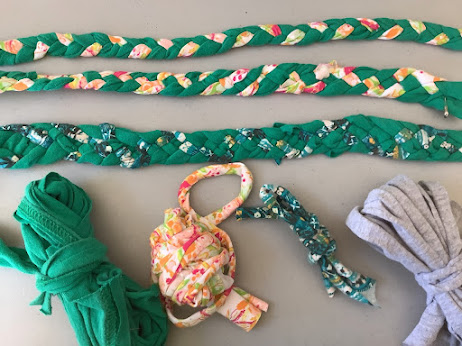I have a stack of scrappy or improv quilt tops waiting in the wings for a dedicated block of time for intuitive free-motion quilting [read therapeutic quilting]. These tops are for charity quilts—kitty quilts for the cats at the Chattanooga Cat Clinic or cuddle quilts for my guild's community service project.
 |
| Two free-motion quilted kitty quilts, ready for binding. |
Yesterday, I took advantage of the extra day in the Memorial Day weekend to baste and start quilting a few of the kitty quilt tops. These quilt tops are approximately 25" x 27" that can be free-motion quilted quickly, but still offer a mental respite from the daily grind.
 |
| Five kitty quilt tops ready for basting and quilting. |
The 9 kitty quilt tops were paired with backings. A 2-ply flannel I got on clearance offers an extra soft and squishy backing fabric that the kitties and staff at the Cat Clinic love.
 |
| 2-ply flannel for the backing fabric. |
I also tried out these pre-wound bobbins of WonderFil DecoBob, an 80 wt. soft poly thread. Boy, pre-wound bobbins make it soooo fast AND easy! (Buy a pack of these in a neutral color and you're set to go.)
.jpg) |
| DecoBob pre-wound bobbins. 80 wt soft poly from WonderFil Specialty Threads. |
The 80 wt. DecoBob thread sinks right into the 2-ply flannel. I didn't even need to adjust the thread tension. A 50 wt. cotton thread was used on the top.
 |
| Free-motion quilting (back view) on2-ply flannel. |
For charity quilts, my process is generally piece-piece-piece (several quilt tops), then quilt-quilt-quilt, then bind-bind-bind. When I get "in the zone"—piecing or quilting or binding—I like to keep doing the same process over and over.
This must be the "therapeutic" part.



















